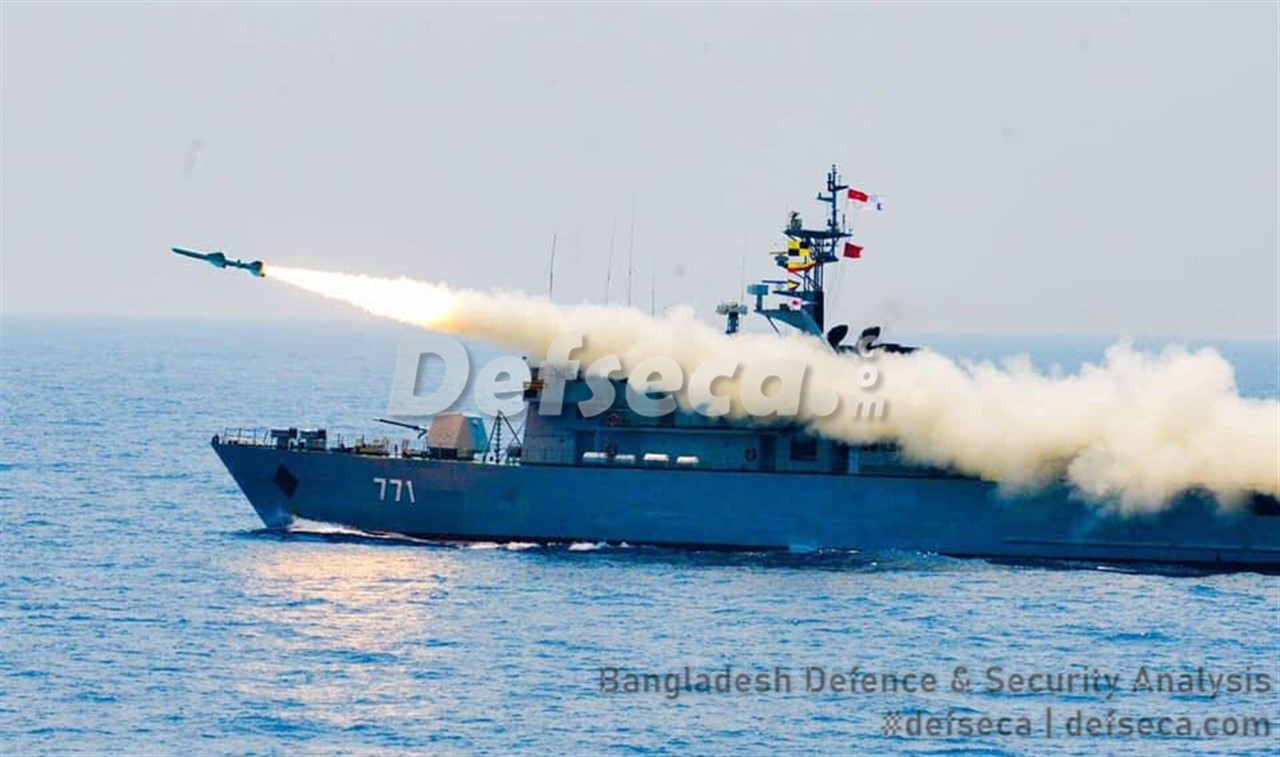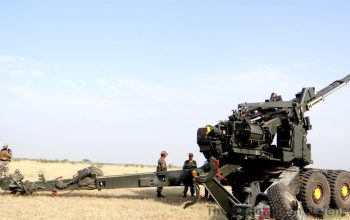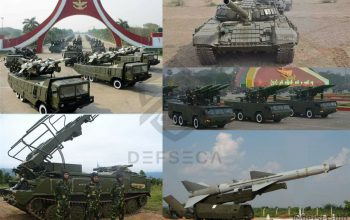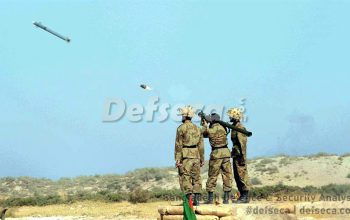The Myanmar Navy is the naval branch of the armed forces of Myanmar having 19,000 personnel in total with both men and women serving the force. At present the Myanmar Navy operates more than 125 vessels of different classes.
Prior to the reformation in 1988 the Myanmar Navy was small in size and limited to supporting the Army’s counter-insurgency operations however it was always an important factor in Myanmar’s security consideration and more so at present tasked with defence of the country’s territorial waters from external threats.
Today the Myanmar Navy maintains 5 Naval Region Commands namely in Irrawaddy, Danyawaddy, Panmawaddy, Mawyawaddy and Tanintharyi. These region based commands are mostly commanded by Commodore level officers except for Danyawaddy, which is commanded by a Captain. There are also the Naval Training Command, Naval Dockyard Headquarters having Rear Admirals as Commandants and four fleets including the 1st Fleet, 2nd Fleet, 3rd Fleet and 4th Fleet each commanded by a Captain.
Administrative and support units
- Naval headquarters, Ministry of Defence (Naypyidaw)
- Strategic Naval Command (headquarters in Naypyidaw)
- Naval Training Command (Seikkyi)
- Naval Shipyard Headquarters (Yangon)
- Central Naval Hydrographic Depot (Yangon)
- Central Naval Diving and Salvage Depot (Yangon)
- Central Naval Engineering Depot (Botataung, Yangon)
- Central Naval Stores Depot (Yangon)
- Central Naval Communications Depot (Yangon)
- Central Naval Armaments Deport (Seikkyi)
Naval regional commands and bases
Irrawaddy Regional Command (headquarters in Yangon)
- Thanhklyet Soon Naval Base
- Bassein Naval Base
- Coco Island Base (Naval Radar Unit)
Danyawaddy Regional Command (headquarters in Sittwe)
- Kyaukpyu Naval Base
- Thandwe (Sandoway) Naval Base
Panmawaddy Regional Command (headquarters on Hainggyi Island)
Mawyawaddy Regional Command (headquarters in Moulmein)
Tanintharyi Regional Command (headquarters in Mergui)
- Zadetkyi Island Naval Base
- Mali (Tavoy) Naval Base
- Palai Island Naval Base
- Kadan Naval Base
- Sakanthit Naval Base
- Lambi Naval Base
- Pearl Island Naval Base
- Zadetkale Naval Base (Radar Unit)
Other naval units
The Myanmar Navy also maintains a naval infantry battalion consisting of roughly 800 personnel. They are mainly deployed in Arakan, Tenasserim and Irawaddy delta coastal regions primarily in the role of counter-insurgency to assist the Myanmar Army.
A separate naval air defence force was established and uses Bofors 40mm and ZPU-2 pattern Chinese-made anti-aircraft guns.
Myanmar Navy ships in detail
Submarines

The Myanmar Navy is set to operate its first submarine from the end 2019 after having purchased a refurbished Kilo-class submarine from the Indian Navy’s inventory through defence credits from India. INS Sindhuvir (S58) will be transferred to the Myanmar Navy. It was commissioned in the Indian Navy on 26 August 1988 and already underwent a refit.
Armaments include the Club-S missile, Type 53-65 torpedo TEST 71/76 anti-submarine, active-passive homing torpedo and 24 DM-1 mines in lieu of torpedoes. Transfer of Club-S missiles have not been verified. Myanmar may use India’s indigenously built heavy weight torpedoes instead of Russian ones in future.
Frigates

The Myanmar Navy currently operates three classes of frigates including Kyan Sittha (F12 Kyansittha and F14 Sin Phyushin built at Naval Dockyard (Myanmar). These frigates are armed with an amalgam of Chinese and Indian origin armaments including an Indian made Oto Melara 76 Super Rapid Cannon, three NG-16 6-barrel 30mm CIWS guns, 4 C-802 anti-ship cruise missiles (range: 120 km), 2 triple torpedo launchers for Sheyna lightweight torpedoes, 6-cell turret mounted Igla-MANPADS for air defence and possible ASW rockets and decoy systems of Chinese origin.

Prior to the Kyan Sittha class frigates the Myanmar naval dockyard built the Aug Zeya class frigate, of which F11 Aung Zeya alone was built. It is equipped with mostly the same weapons as the Kyan Sittha class with the exception of the anti-ship missile system and ASW torpedoes being Kh-35E (range: 130 km) and Yu-7 torpedoes.
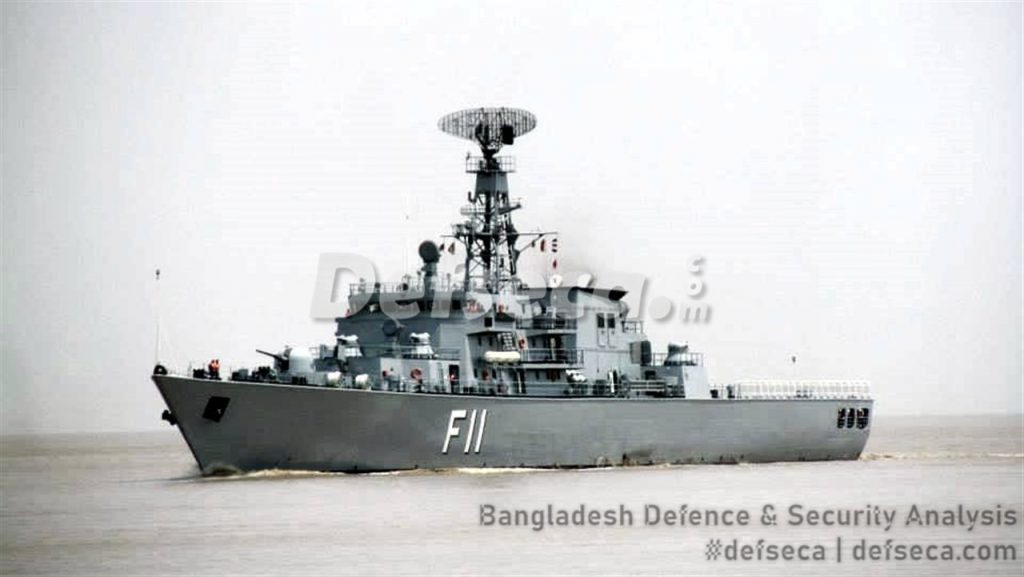
Having faced shortage of large surface combatants Myanmar Navy purchased two obsolete Jianghu-II (Type 053H1) frigates from China in 2012. The F22 Mahar Bandoola and F23 Mahar Thiha Thura are armed with twin 100mm main guns, 4 dual 37mm anti-aircraft guns, 8 C-802 anti-ship cruise missiles, 2 Type 81 5-tube ASW rocket launchers, 2 Type 62 5-tube anti-submarine mortar launchers and 2 depth charge racks and projector.
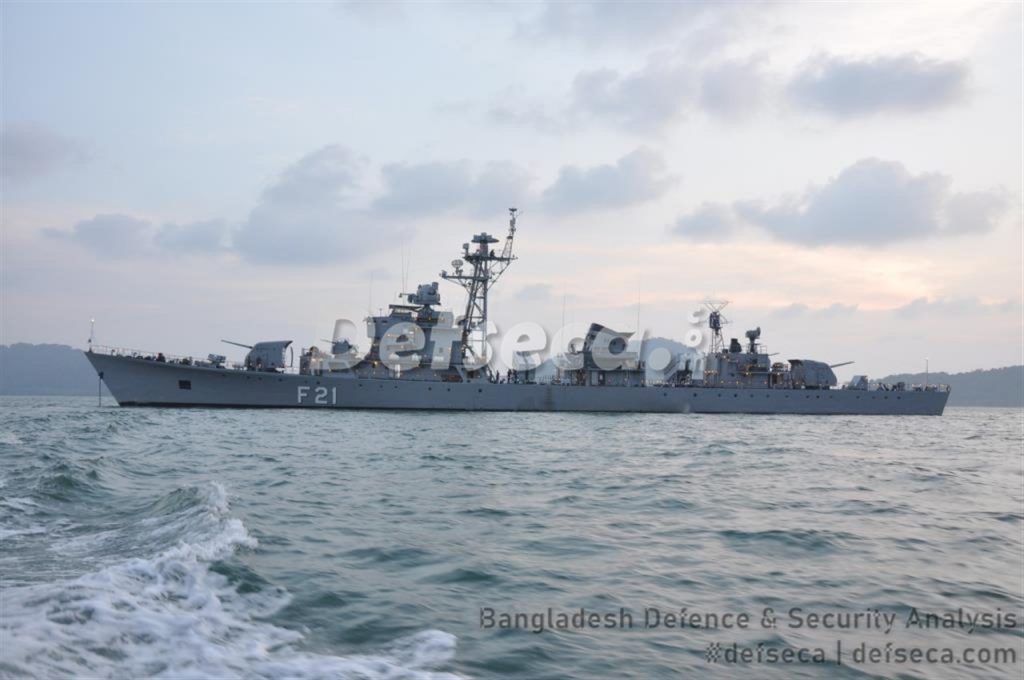
Corvettes
The Anawratha class is the lone model of corvettes currently in commission with the Myanmar Navy. 771 Anawratha, 772 Bayinnaunng and 773 Tabinshwehti built in 2001, 2003 and 2016 respectively at the Myanmar naval dockyard. The warships are armed with an Indian-made Oto Melera 76mm Super Rapid Cannon, 1 Type 69 twin-barrel 30mm CIWS gun, 2 Type 58 14.5mm anti-aircraft machine gun, 4 C-802 anti-ship cruise missiles with a range of 120km and 2 Type 81 ASW rocket launchers. A helipad is present however the ships in the class lack hangers. The 773 Tabinshwehti is also armed with 6-cell Igla MANPADS turret from North Korea to provide limited air defence capabilities against low flying aircraft.

Fast attack craft
The Myanmar Navy operates a fairly respectable FAC force with 18 missile armed fast attack craft capable of providing coastal defence. They are mostly armed with Chinese-origin C-802 and C-802A anti-ship cruise missiles with ranger of 120~180 km). Classes include Houxin, 5-Series and a recently built “stealth ship” featuring 4 C-802A anti-ship missiles, an AK-630 six-barrel 30mm CIWS gun and 2 Type 69 14.5mm twin anti-aircraft machine guns. A total of 9 5-series gun-armed FAC’s are also present in the fleet. These are armed with one 37mm anti-aircraft machine gun, 2 Type 87 25mm twin anti-aircraft guns and 2 Type 69 14.5mm twin anti-aircraft guns, all of which can be used in direct fire roles against land or naval targets.

Large patrol craft
The Myanmar Navy has very limited offshore patrol assets with just two Danish built Osprey-50 class vessels and a newly built Inle class offshore patrol vessel built at the naval dockyard. The OPV is armed with a Type 66 57mm main gun and also has a helipad.
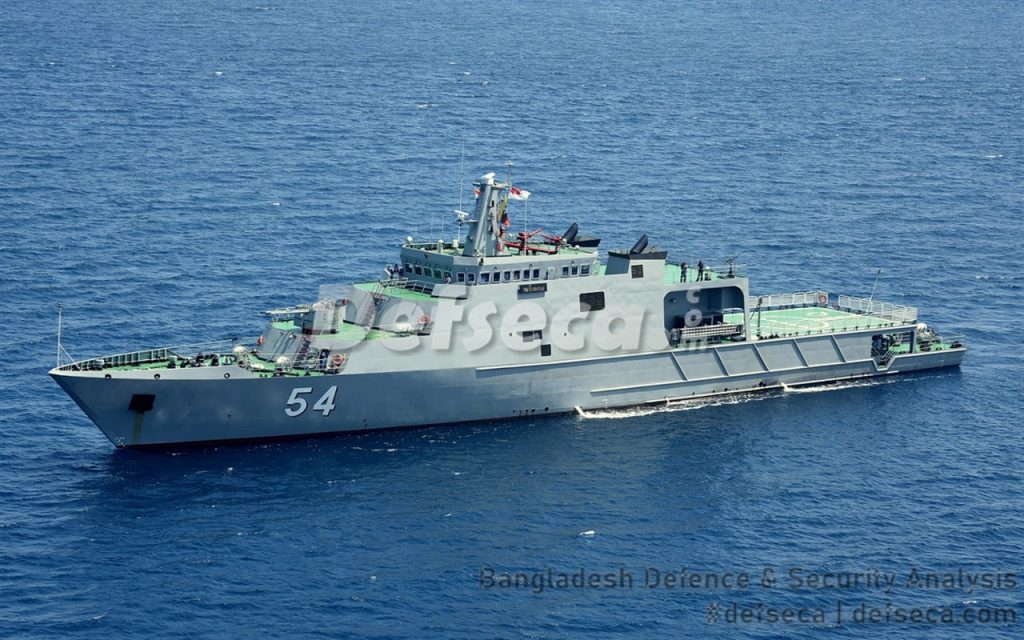
Coastal patrol craft and minor patrol craft
The Myanmar Navy operates dozens of minor coastal patrol craft and small boats including the PGM 43 class (6 craft), Y311 class (1 craft), Y-series (10 craft). These were all built between 1959 and 1967. Armaments including Bofors 40mm guns and Oerlikon 20mm auto-cannnons. Their combat worthiness is doubtful at best.
Other notable patrol craft includes a pair of Swift class cruiser patrol craft acquired from Singapore in 1980 armed with 2 Bofors 40mm guns and 2 Oerlikon 20mm auto-cannons besides 2 12.7mm heavy machine guns.
The Myanmar Navy also operates six Carpentaria class patrol craft purchased from Australia in 1978-1980 armed with 20mm gun and Mk10 anti-aircraft guns. There are also three PB-90 purchased from Yugoslavia in 1990 and the indigenously built 412 class, of which four units are in service since 1983.
The latest small boat purchase were a pair of Super Dvora Mk III class patrol boats from Israel in 2017. These are armed with Typhoon stabilized cannons, Oerlikon auto-cannons and a pair of 12.7mm heavy machine guns. A total of six patrol boats are said to be in service presently.
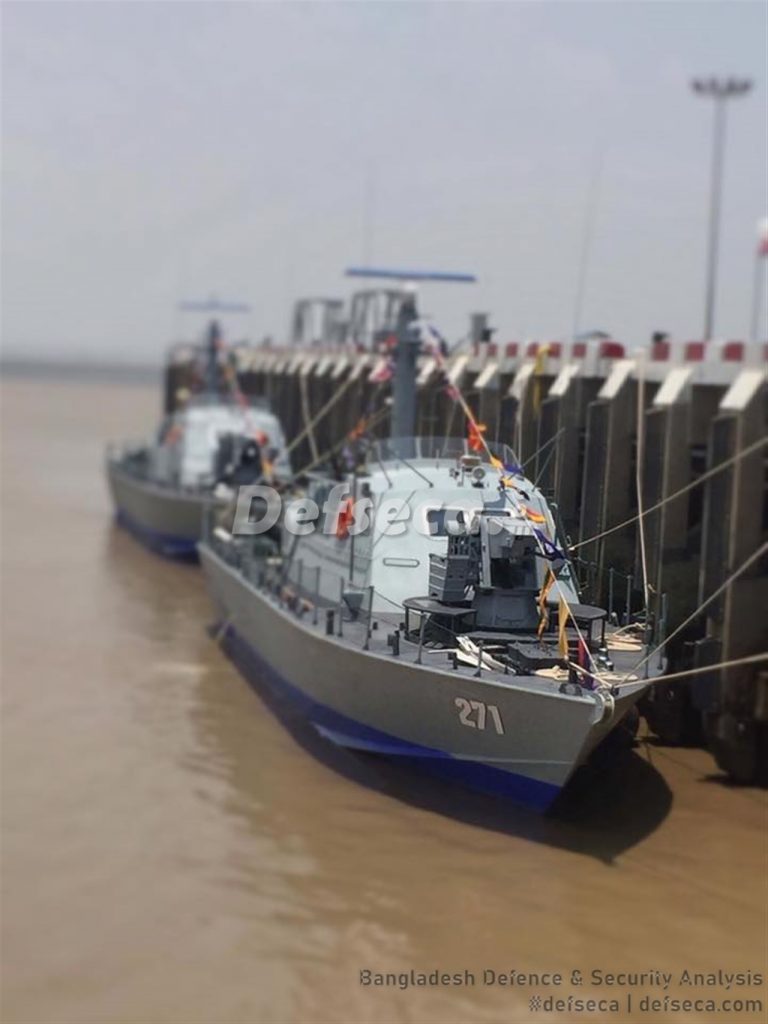
Anti-submarine warfare vessels
The Myanmar Navy operates 9 Hainan class sub-chasers armed with 2 Type 66 57mm twin guns, 2 Type 87 25mm twin guns and 2 Type 69 14.5mm twin anti-aircraft machine guns and rocket depth charge launchers. These vessels have been relegated to Category B reserve status with limited sea worthiness.
The Myanmar naval dockyard also built a torpedo boat (T201) in 2014. The vessel is armed with 8 torpedoes and has a length of just 21m. The torpedo boat can reach a maximum speed of 35 kt and is armed with Chinese or Russian manufactured torpedoes. Further units have not been constructed till date.
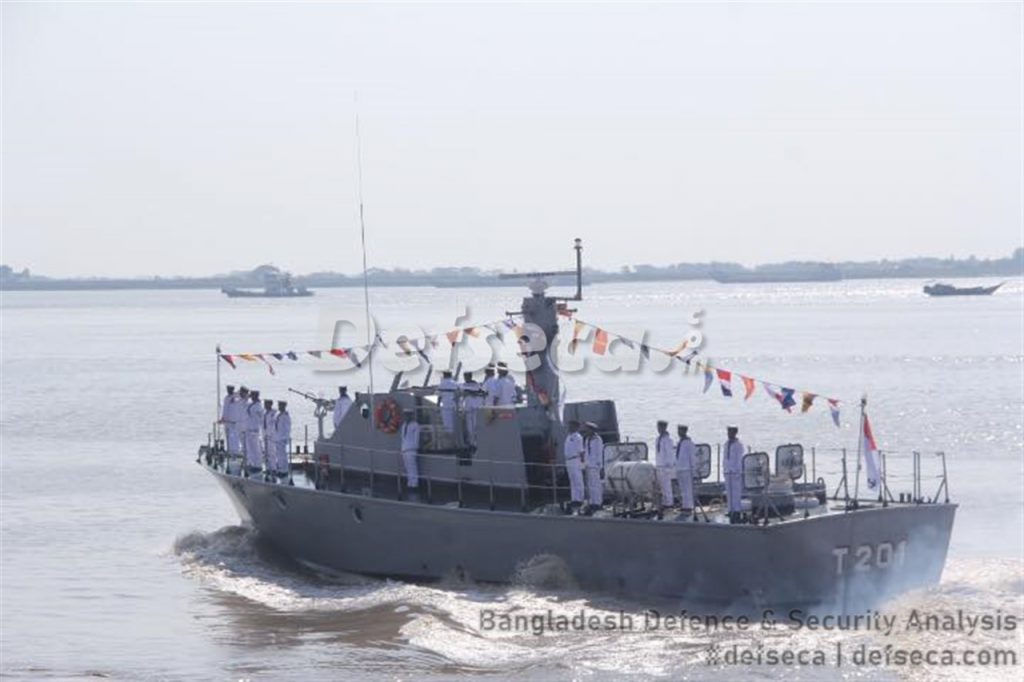
Minesweepers
Mine sweeper capabilities of the Myanmar Navy remains at a nascent stage with only two Admirale class minesweepers in service acquired from the US in 1967. The two minesweepers are equipped with a 76mm main gun, two Bofors 40mm anti-aircraft guns, four AuliGuns and Hedgehog anti-submarine weapon.
Amphibious warfare vessels
As expected with its contribution to counter-insurgency operations the Myanmar Navy built up a fairly sound amphibious warfare capability compared to regional standards. The latest of which is a Makassar class landing platform dock (LPD) built by Daw Sun Shipbuilding in South Korea bearing name 1501 Moattama.
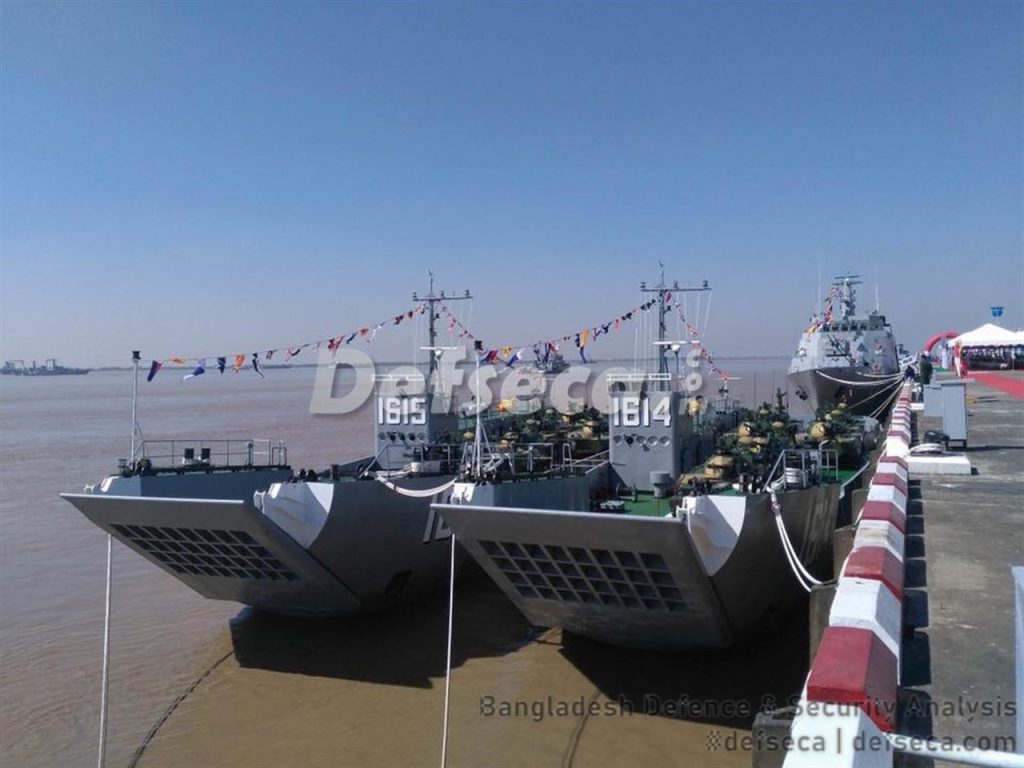
The Myanmar Navy operates seven Landing Craft Mechanised (LCM), all of which were built indigenously. They also maintain 18-strong fleet of Landing Craft Tank (LCT), all of which are 29 metres in length and are armed with machine guns. They were built between 2016 and 2018 illustrating the importance of such a capability given by Myanmar Navy’s top brass.
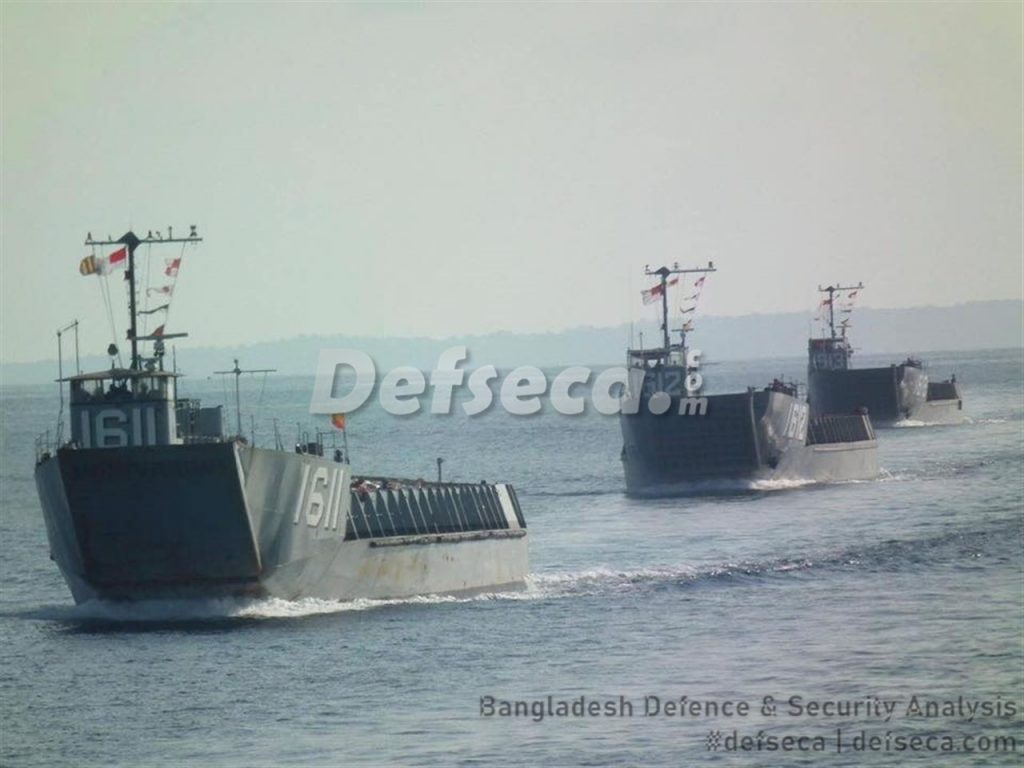
The Navy also uses two Landing Craft Utility (LCU), including one built indigenously in 1984. The other LCU originates from the US and entered service in the 1960s.

Scientific vessels
The Myanmar Navy maintains a one survey ship (801 Thu Tay Thi) acquired from Yugoslavia in 1965. It is equipped with a helipad, 2 Bofors 40mm anti-aircraft guns and two 20mm Oerlikon auto-cannons.
Logistics ships
The Myanmar Navy operates a handful of coastal logistics ships repurposed from merchant vessels and pressed in to military service to aid transportation of troops and equipment. There are also four coastal transport vessels (612, 613, 615, 618) built in 1990 and equipped with anti-aircraft guns for self-defence. A Chin Dwin class troop transport vessel was also commissioned in 2016 having pennant number of Troop Carrier AP-01.
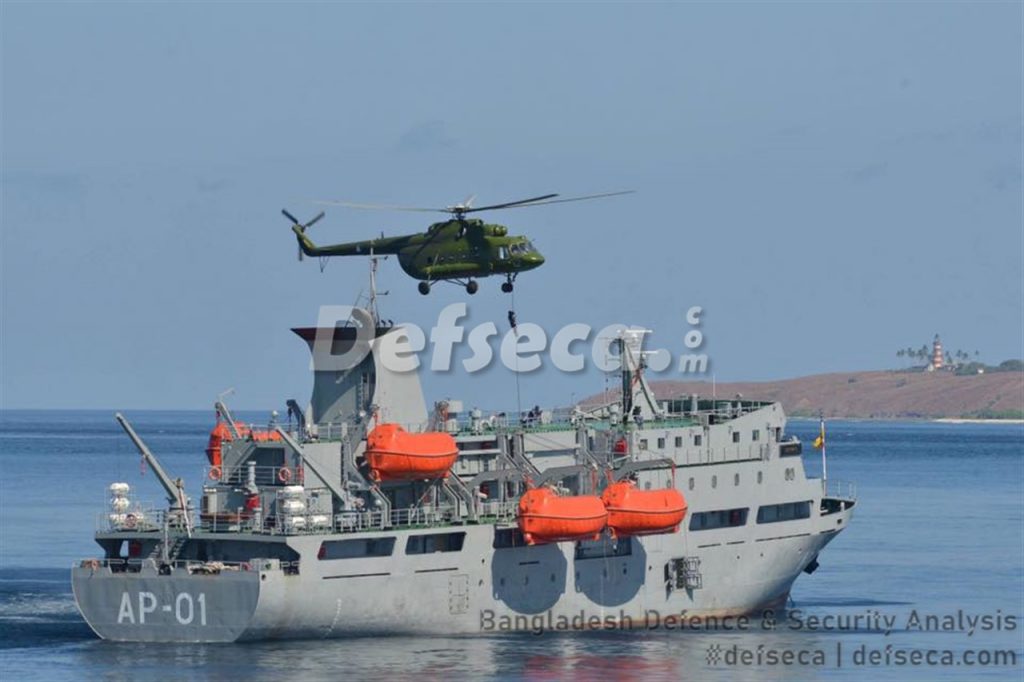
A single Yadanabon VIP transport vessel was also commissioned in 1990. Two hospital ships including Thanlwin (Hospital AH-02) and Shwe Pu Zun (Hospital AH-01) were commissioned in 2015 and 2012 respectively. These are minor hospital ships with 25-bed hospital including CT scan room, minor eye operation room, minor operation theatre and major operation theatre.
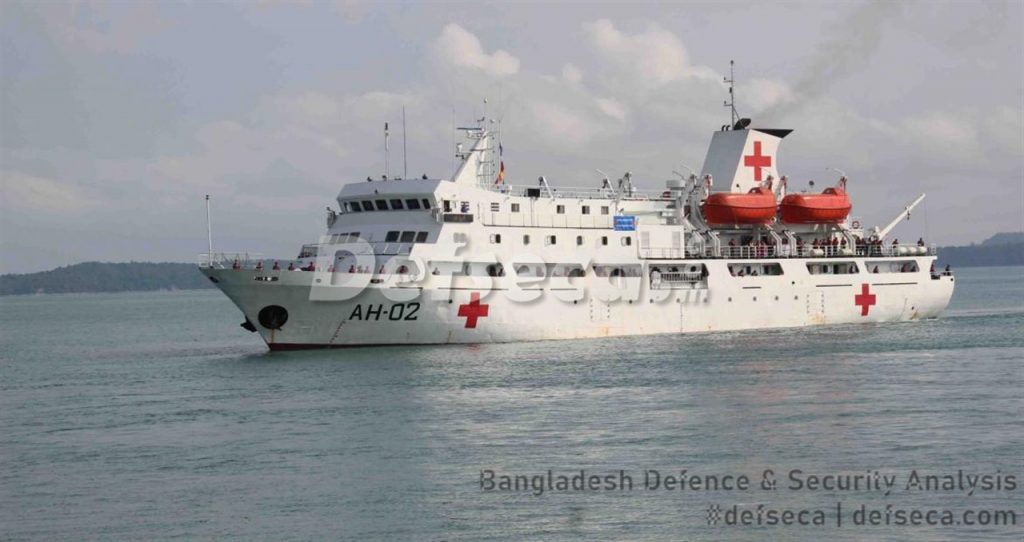
The Myanmar Navy also maintains four tug boats built between 2013 and 2018. Two are sea-going having length of 26 metres and capacity to tow boats.

River patrol craft
The Myanmar Navy operates 6 PBR class riverine patrol craft acquired from the United States in 1978-1982. Prior to those 10 Yan Naing class boats were in service since 1970 besides 25 Michao class riverine patrol craft since 1963-1968.
Floating dry dock
The Myanmar Navy operates two floating dry docks including a Chinese built unit commissioned in 2013 and an indigenously built 65-metre version in 2018.
Naval aviation
Though the Myanmar Navy does not have its own naval aviation wing, the air force is equipped with 2 ATR-42 maritime patrol aircraft, 5 Britten-Norman Islander BN 2 acquired through India and 6 Z-9 helicopters from China. Air Force fighter aircraft are also tasked with supporting the Myanmar Navy when required. JF-17’s and Su-30’s have the potential to act as shore-based maritime strike aircraft in support of naval warships. This would be a greater challenge for Myanmar’s foes much more so than its surface combat fleet.

Unmanned surface vehicles The Myanmar Navy operates two unmanned surface vehicles built between 2014 and 2016.
Conclusion
The Myanmar Navy is a basic green water naval force with limited strike capabilities beyond coastal defence roles.
In November 2008 standoff with the Bangladesh Navy the Myanmar Navy faired poorly against much larger warships of the Bangladesh Navy. Training was found to be lacking and ability to assert its power over its area of operations was questionable. Since then the Myanmar Navy focused on rebuilding the service by introducing better training sending personnel to India, China, Russia and Pakistan for advance courses.
Myanmar Navy will be in a stronger position in 2020 with the induction of its first submarine purchased from India at a discounted rate through defence credits. The Kilo class (877EKM) would certainly complicate the calculations for neighbouring navies but a lone unit is not expected to be operational throughout the year. Ongoing maintenance will be entirely relegated to the Indian Navy, making it more costly and time consuming. India’s decision to transfer the submarine is a response to the Chinese for selling two submarines to Bangladesh instead of based on actually strengthening the naval capability of Myanmar.
The surface combat capability of Myanmar is unremarkable with only a handful of light frigates. Moreover the air defence capabilities aboard those warships leave them vulnerable against any manner of anti-ship missiles operated by the navies of its neighbouring countries.
The Myanmar Navy’s strength lies in its amphibious warfare capabilities with addition of the Makassar class landing platform dock (LPD) and mass produced landing craft to support Army’s counter-insurgency operations.
Its ability for mounting effective coastal defence by way of a large fleet of missile-armed fast attack craft is also noteable. Together with use of shore-based JF-17 and Su-30 fighter aircraft in maritime strike roles the fleet can serve as an effective deterrence in the coastal belt.
The rough seas of the Bay of Bengal will however limit its naval operations throughout the year unless the country’s naval force introduces ocean-going combattants that can remain at sea throughout the year.
Critical short comings in logistic are also needed to be addressed before Myanmar Navy can mount any major sustained campaign against better equipped navies of neighbouring countries.
The training of its officers and sailors would also be tested in such encounters. It remains to be seen if training improved markedly from the 2008 standoff with the Bangladesh Navy in future.
Of commendable note however is its naval shipbuilding industry. The dockyards have churned out ships of various sizes understanding the limited financial resources of the country. It integrated Indian and Chinese armaments and sensors for the first time. Such ability is noteworthy in its own right even if questions may remain over their operational abilities in pressure situations.
In future the Myanmar Navy will be something to watch for, increasingly tasked with external defence.

